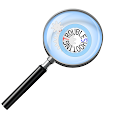The power of the GPS signal “is comparable to the power emitted by a 60-watt light bulb located more than 20,000 km [12,000 mi.] away from the surface of the earth; this means the signal could easily be disturbed by any ground source located near an aircraft and emitting in the GPS L1 frequency,” Airbus experts in operations, navigation and security say in a company publication focusing on safety.
Interference can cause the loss of GNSS position and timing. In that instance, the Flight Management System (FMS) will revert to the onboard inertial reference system (IRS) and ground-based navigation aids, such as DME and VOR (distance measuring equipment and VHF omnidirectional range). “A loss of GNSS inputs does not lead to a map shift or an erroneous position computation by the FMS. In the case of a loss of GPS signal, the FMS switches from the mixed GPS/IRS position to an IRS-DME/DME position or IRS-VOR/DME or pure IRS, in order of priority,” the experts explain.
How to handle these events in the daily aircraft operations
When GNSS signals from satellite constellation are lost or degraded by interferences, depending on the duration, aircraft capabilities can be maintained, limited or lost during the flight.
Cockpit effects that can be observed by the flight crew during total loss of GNSS signal.
Click on images for sized complete view
Maintenance recommendations to be considered during post-flight analysis after GNSS loss event.
A320, A330, A340, A380 and A350 aircrafts
GPS output sent to the IRS which sends a “hybridized” position to the FMS).
These aircraft are fitted with two MMRs, three ADIRUs and two (A320/A330/A340/A380) or three (A350) FMS to compute the aircraft position.
In case GPS data is lost due to GNSS RFI affecting both MMRs, the aircraft position source will switch to pure IRS and will enter into the so called coasting mode. If the integrity of GPIRS data is degraded enough then the position source will switch to other radio navigation based solution (from FMS) according to the availability of DME and VOR. If Navaids are not available, the aircraft position solution will switch to IRS only.
















